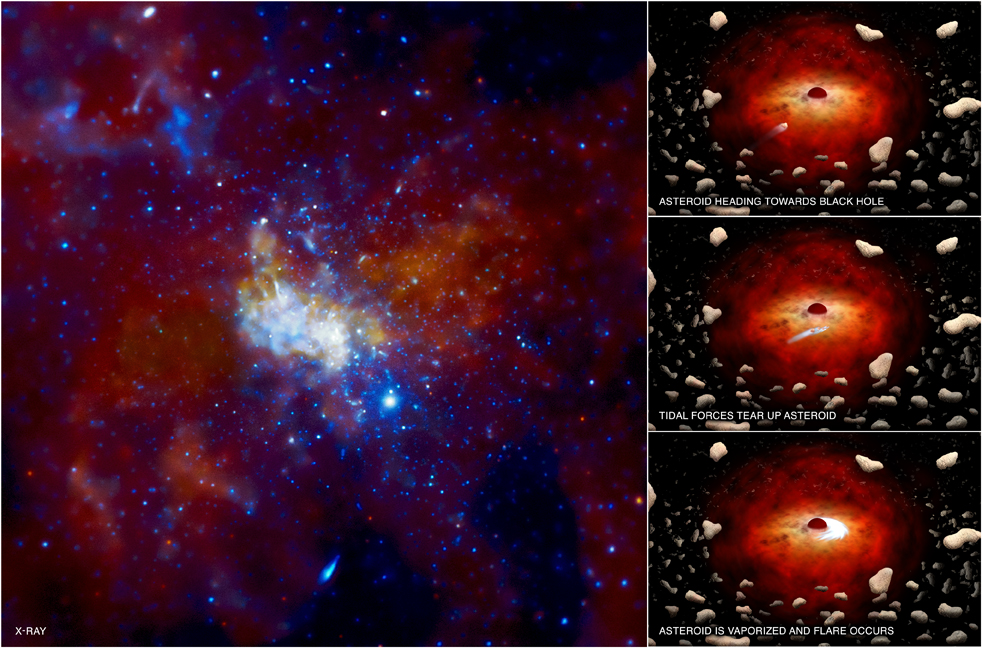
 Credit: X-ray: NASA/CXC/MIT/F. Baganoff et al.; Illustrations: NASA/CXC/M.Weiss
Credit: X-ray: NASA/CXC/MIT/F. Baganoff et al.; Illustrations: NASA/CXC/M.Weiss
Black Hole Meteors?
Meteors are bits of matter heated to incandescence by friction in the earth's atmosphere. Meteors produce bright flashes of light as they make their final plunge to their ultimate destruction. But could other, similar flashes occur, deep in the night? Astronomers have known about mysterious flashes of X-ray light which occur near the Milky Way's central supermassive black hole, Sgr A*. These random X-ray brighenings, best seen by the Chandra X-ray Observatory, have puzzled astronomers for years. Now a new model suggests that these flashes may be the result of a bit of matter, about the size of an asteroid, scattering off a star near Sgr A* and heading into the black hole's maw. As the asteroid nears the black hole, tidal forces pull the asteroid apart, while frictional heating of the remnant causes a bright, brief X-ray flash. The image above shows an X-ray image of the Sgr A* region taken by Chandra, while on the right is shown three artist impressions of an asteroid nearing the black hole, and being ripped apart, and just about to be swallowed by the black hole. If this model is correct, this suggests a cloud of trillions of asteroids surrounding Sgr A*.
Published: February 13, 2012
<
HEA Dictionary ● Archive
● Search HEAPOW
● Other Languages
● HEAPOW on Facebook
● Download all Images
● Education ● HEAD
>

Each week the HEASARC
brings you new, exciting and beautiful images from X-ray and Gamma ray
astronomy. Check back each week and be sure to check out the HEAPOW archive!
Page Author: Dr. Michael F. Corcoran
Last modified Tuesday, 27-Feb-2024 10:06:37 EST


